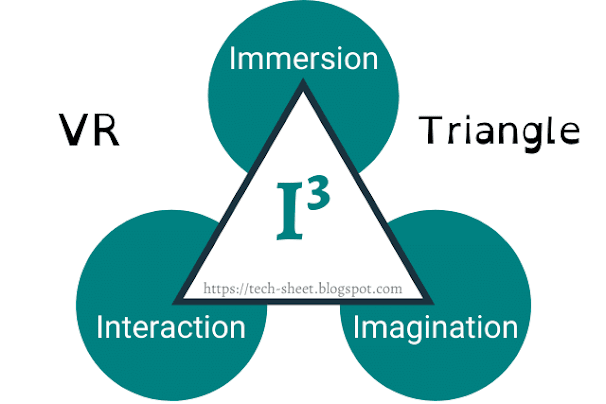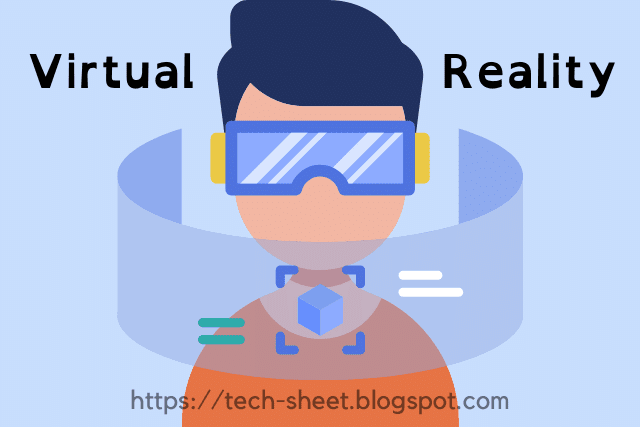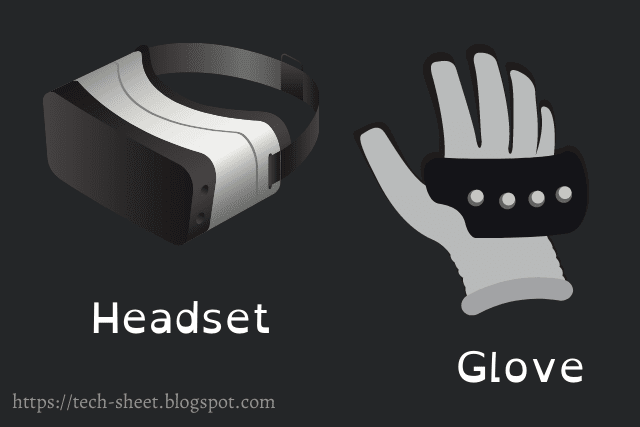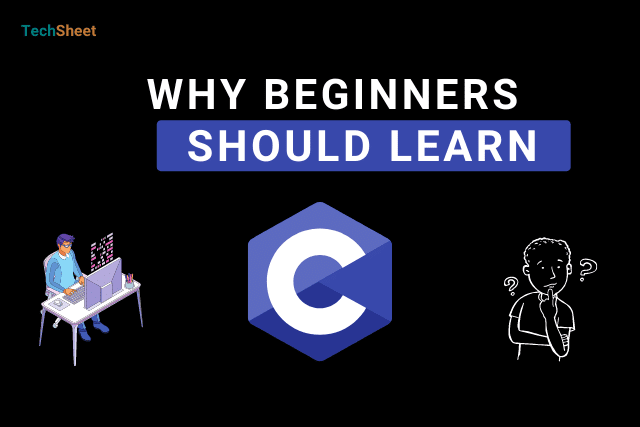What is Virtual Reality and how does it work
The future of virtual reality (VR) has exciting potential in the gaming industry and films, education and training, medicine, military, architecture and construction industry, business trade, industrial factory, driving instruction or flight simulator, traffic management, space exploration, etc.
What is Virtual Reality and how does it work?
Hello everyone, how's it going? Welcome back to another new article!
In the previous article, I discussed what the concept of the global village is? And the topics related to the global village!
In this article, I'm going to talk about What exactly is virtual reality technology? And how does virtual reality or VR work?
Virtual Reality or VR, is a computer-controlled system that allows people to connect or perceive an artificial multidimensional sensory environment through the application of modeling and simulation. The environment mimicked in virtual reality can be exactly like the real world. In this case, real experience is often obtained from virtual reality. Again many times the simulated environment can be different from the real. Such as virtual reality games.
In virtual reality, the user is completely immersed in a computer-controlled environment. The reality is realized in virtual reality by wearing glasses, headsets or head-mounted displays, gloves, costumes, etc. with different types of information transfer devices. In a typical virtual reality, a user wears an animated or animated image from real and behind a helmet with a stereoscopic or three-dimensional screen.
Telepresence refers to a set of technologies that, when used, give a person a real sense of being present somewhere other than his actual position through telerobotics. The presence of telepresence or the artificial three-dimensional world is influenced by the sensors that control the travel utility. The speed of the image displayed on the screen is matched with the speed of the virtual reality user through the motion control sensor.
When the speed of the virtual reality user changes, the speed of the scene displayed on the screen also changes. In this way, the user of virtual reality merges with the artificial three-dimensional world and becomes a part of that world. Wearing data gloves with force-feedback also gives the feeling of touch and at this time the user can use it to pick up or grab any object in the virtual environment as per his wish.
In 1962 Morton Heilig introduced the concept of virtual reality with his discovery of "Sensorama". In 1968, Ivan Sutherland invented the first three-dimensional head-mounted 3D display. The term "virtual reality" was first coined in 1989 by Jaron Lainer. So there is disagreement about the father of virtual reality.

Professor Burdea (Grigore C. Burdea) in his book Virtual Reality Technology has described virtual reality as a combination of immersion, imagination, and interaction. According to him, in virtual reality, people can interact by immersing themselves in the realm of imagination.
VR is an integrated trio of "Immersion" "Interaction" and "Imagination"
Materials for creating virtual reality systems
Effector: Effector is a special type of interface device that connects to the virtual reality environment. For example, wearing a Head Mounted Display-HMD, gloves, suit, etc., realizes the reality in virtual reality.
Reality Simulator: Reality Simulator is a type of hardware that provides sensitive (visual or auditory) information to the effector. Such as different types of sensors, audio or video processing devices, different types of transducers for controlling pressure and temperature, etc.
Application: Application is a type of software that describes the relevance of simulation. Different types of application software can be seen depending on the operating system. For example, Autodesk's "Division" for Intel processor-dependent PCs.
Geometry: Geometry is information about the external features of various objects in a virtual environment. Geometry is created with computer-aided design or CAD software. For example, Autodesk's "AutoCAD" software for 3D modeling of various objects on Intel processor-dependent PCs. Files created by CAD software are exported for rendering and authoring virtual reality.
Read more: Top 5 Technology Trends of 2022 You Should Know
Use / Application of Virtual Reality
Games and movies: Virtual reality is widely used to create a variety of modern interesting games. Such as Xbox360, PS4, etc. Virtual reality is used when creating animations to capture risky scenes in various movies.
Education and training: It is widely used in children's education, science education, engineering education. For example, students can perceive the internal reaction simulations of a nuclear reactor.
Medical field: It is possible to avoid various kinds of mistakes and risks by applying virtual reality in the medical field. For example, it is possible to train new doctors and medical students through simulated surgery. It is also possible to run new medical procedures experimentally on simulated patients.
Military: Flight simulators have been used in military training for many years in the military. It is possible to further improve the conventional flight simulator using virtual reality. Also, through virtual reality simulated war, soldiers are given much more practical and advanced training.
Architecture and construction industry: Architects can design a building through virtual reality and imagine it before actually constructing the building. As a result, it is possible to see what the building will look like and if there are any defects, they can be easily detected.
Business Trade: The use of virtual reality can also be noticed in business trade. Before starting production of any device or product, it can be created through virtual reality and presented to the public for testing its quality.
In the factory: The production process of the factory is simulated through virtual reality. As a result, its efficiency, productivity, risk, etc. can be monitored before starting the production process.
Driving Instruction / Flight Simulator: Virtual reality is being used in driving training nowadays. It is possible to master the various rules of driving very easily. Different types of virtual reality driving simulators have been created as microcomputer technology is readily available at a low cost. From simple running techniques to complex techniques can be mastered through it.
A flight simulator is a device that artificially creates an imaginary environment for the flight, landing, and movement of an aircraft for pilot training, design, games, etc. Flight simulation is the use of virtual reality and artificial intelligence to create an imaginary environment for the flight, landing, and movement of an aircraft.
Traffic Management: Virtual reality is now being used in the management of road, air, rail, and water vehicles. This makes it very easy to learn how to operate a vehicle even in a crisis in a computer-controlled imaginary environment.
In imaginary reality, various types of training are given to the officials controlling the air traffic. The virtual reality control system has made it very easy to manage the complex task of when an aircraft will fly in the sky or which aircraft will touch the runway.
Space Exploration: Each phase of the space mission carries a variety of risks. Virtual Reality has taken a special place in the training on all the important experiments of the preparation period, the activities of the astronauts, and all the details related to the operation of the spacecraft. Astronauts are already trained in space research and adaptation to space in imaginary environments.
Read More: Complete Roadmap to Blockchain Development
Impact of Virtual Reality
Experts believe that the application of virtual reality in various professions and research will have both positive and negative effects on society.
Some of the positive effects of virtual reality-
Some of the negative effects of virtual reality-
Virtual Reality - FAQ
-
What is virtual reality in simple words?
Virtual reality, or VR, is a computer-controlled system that allows people to connect or perceive an artificial multidimensional sensory environment through the application of modeling and simulation.
-
What are virtual reality examples?
In the future, when virtual reality becomes more readily available, it will be used in almost everything from entertainment to the workplace. Such as - game industry and films, education and training, medicine, military, architecture, and construction industry, business trade, industrial factory, driving instruction or flight simulator, traffic management, space exploration.
-
Is it possible to touch the imagination with the help of virtual reality?
It is possible to touch the imagination by staying in reality. The environment mimicked in virtual reality can be exactly like the real world. In this case, real experience is often available from virtual reality. Therefore, even in reality, the things of imagination can be touched.



%20Rahi.jpg)




